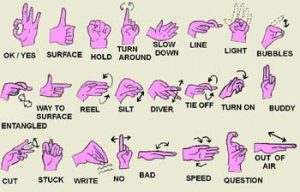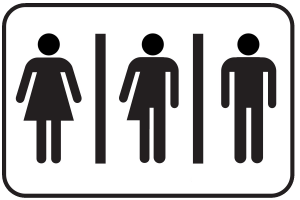sex&language
 One of the faculties we consider fundamentally human is the use of language. All of culture, education, philosophy, communication, in short: everything that is associated with the human mind, is related to thinking and language. Language seems to be the last remaining argument to see humans as ‘spiritual’ beings, separate from all other living things, endowed with a free will and a moral conscience.
One of the faculties we consider fundamentally human is the use of language. All of culture, education, philosophy, communication, in short: everything that is associated with the human mind, is related to thinking and language. Language seems to be the last remaining argument to see humans as ‘spiritual’ beings, separate from all other living things, endowed with a free will and a moral conscience.
Sex & language: studies of other animals
However, in the past 100 years this idea has been gradually undermined, especially because of what was discovered in the study of other animals (previously the word ‘other’ would not have been used here). The idea that animals have only instincts and that humans also have a ‘mind’ which is considered higher, was predominant in the education of children, in morality, criminal law, and so on. In fact this is still the case. Universities and colleges still teach that humans have a ‘body’ and a ‘mind’. Thus, language is seen as a product of the ‘mind’. Language is supposed to be unique for humans and is linked to consciousness and free will.
Sex & language: evolution 
But other animals have ‘languages’ too, and some have been trained to learn a human language as well, albeit on a simple level. It is also a fact that human language developed gradually over hundreds of thousands of years, just as humans themselves did not appear out of the blue, but also evolved from other species, and in fact are still evolving. Children learn the language of their caregivers, gradually, during childhood, and under varying conditions. In most speakers it remains far from perfect. Our languages have developed from older languages, which have been traced back as far as ten thousand years. Before that there must have been a long-period of development, perhaps 50.000 years, associated with the early days of Homo Sapiens. But the language faculty can be traced much further back, to earlier species of humans, going back as much as half a million years ago. Gestures and sounds as communication signals for the purpose of warning, indicating rank and power, flattering, mating, scolding and punishing are still clearly the basics of our daily use of language. For a clear understanding of language, it is important to start from such elementary functions, and not restrict ourselves to the tiny percentage of percent of truth-bound and objective use of language, which was a tremendous leap forward for the human development into the only species that can produce objective true or false statements about the world.
Sex & language: social interaction
So, for the most part, language is an instrument for social interaction, and serves the same basic purposes as the sounds and gestures of other animals. Also, the ability to use language varies widely among different individuals, as a consequence of childhood circumstances. Children who grow up in a poor language environment, usually create a similar environment for their own children.
Another point is, that language influences thinking itself. This means that our opinions about the world are relative. The idea of an absolute mind which speaks to ‘man’ in absolute truths about what the world and life on earth are about, about what exists behind phenomena, about what is good and what is bad, and so on, has become untenable. On the other hand, language is the only instrument in which objective statements can be made and theories about the world around us can be formulated. This small fraction of language must be distinguished from the everyday use of language that serves our survival needs. The above thoughts are of special significance when we consider the sexual aspect of language.
Sex & language: gender distinction in grammar
Language is sexual in the sense that gender plays a systematic role in grammar (the system of rules for forming words and sentences) and semantics (the system of rules that determine the meaning of words and sentences). In most languages articles, nouns and adjectives, pronouns and verbs show a systematic ‘gender’ distinction between masculine and feminine. Many words no longer demonstrate a clearly sexual character, but originally they did. The self-evidence of the sexual distinction has been built into everyday language since it originated, and is learned and confirmed every day in human communication. In English, gender distinction is almost absent from the forms of words (morphology), but there are still many other ways in which the distinction between masculine and feminine is made.
Sex & language: learning the family structure
The gender (sex) of a person is indicated by first name (Bob, Mary), pronouns (he, she), by prefixes and suffixes (Mr, Mrs, prince, princess). Important words are sexual (gender specific): man/woman, husband/wife, son/daughter, niece/nephew, sister/brother, uncle/aunt, father/mother. These are typically family words. So, along with language, children learn to internalize the family structure, which permeates personal and public life and constitutes the sexual basis of society.
Language relating to ‘sex’ in a narrow sense, such as the sexual organs and their functions, sexual intercourse, arousal, fantasies, has a taboo character. Everyone knows ‘dirty’ words’ exist, but using them is limited to special, restricted conditions. In daily life ‘sex’ in language is usually hidden just as the sex organs are hidden under clothing, even when that is unnecessary on the beach on a hot day.
Many sexual words have an immediate and powerful effect and evoke strong emotions. Think of words like incest, rape, paedophilia, sexual abuse, child pornography. Few people can talk about these subjects in the same rational way they talk about eating and drinking or even war. In the past, words like masturbation, homosexual, birth control and abortion caused similar negative reactions, but these words have now become normal.
Sex & language: body and mind
There is another aspect of language that is related to sex, namely the distinction between ‘body’ and ‘mind’. The mind is associated with language, while sex is called ‘physical’. The distinction between body and mind is based on an old misunderstanding. People commonly consider mating a physical activity and talking a mental activity, but this does not make much sense. Talking involves ‘thinking’, but also the brain and the tongue, while sex involves not just the genitals but as much imagination and deep feeling as we are capable of.
Sex & language: the mythical aspect
There is also a ‘mythical’ aspect of language. Stories that are told (verbally or written, on tv, on the internet) almost always fit into bigger stories which are based on ideas about how the world works, about good and bad, etcetera. Such explanatory stories or frameworks are called ‘myths’. These can usually be placed within the framework of the sexual system. From Homer, Sophocles and the Bible to the great novels and soap series of our time, the stories are all about family relationships, conflicts between family members, dangers which threaten family ties, problems regarding partner choice, sexual fears, jealousy, pregnancy and so on. The family is, as it were, the all-encompassing myth, the theme that creates innumerable variations. This myth maintains the sexual order. But because no system is closed, myths also create the possibility of breaking away from the sexual order. By depicting the sexual system, language allows us to see its awful consequences.

